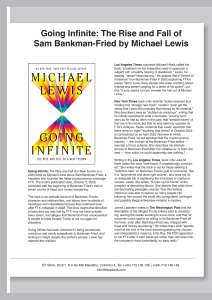The presenting of the 1997 Budget is definitely a step in the right direction. It addresses the problem of reducing the budget deficit by reducing current expenditure, while letting capital expenditure increase, which is necessary to maintain the capital stock of the country. There has been a great diversification of the Sri Lankan economy over the last 15 to 20 years. This is probably the main reason that has made the Sri Lankan economy a more resilient economy, and why it was able to absorb the shocks it received this year without growth plummeting to negative rates. These are some of the views of THOMAS K MORRISON, Resident Representative in Colombo of the International Monetary Fund, in an exclusive interview for “Business Today”. The IMF Representative was interviewed by LUCIEN RAJAKARUNANAYAKE.
BT: One of the words we have frequently heard in recent weeks with regard to the economy of Sri Lanka is fundamentals. It has been referred to in the latest budget speech. It has been stated by the President who is also the Finance Minister. The claim made is that this government has got its economic fundamentals right. What is your view on this?
I think the use of the term fundamentals is a way of referring to the simple economic situation that even as individuals we are all faced with, that you have to make ends meet, in other words you can’t forever go on spending more than you earn. I think at the core of a government’s economic situation, just as that of a company or individual, is the same fundamental. You need to have a sustainable financial situation in the sense that you earn enough to pay for at least most of what you spend, and what you borrow must be a sustainable level of debt. If you have a situation where you are increasing your debt every year, and your deficit is high every year, you will reach a point when you can’t pay your interest or your debt service. Then there will be a situation and, in the past experience of the IMF we have seen many countries which reach a point when they had an unsustainable debt. I think that is basically what the fundamentals are, and I think when the government speaks of getting the fundamentals right, basically they are referring to the deficit, the government’s deficit.
We call them imbalances in the IMF. You have external imbalances in the balance of payments, there are internal imbalances with the budget deficit. The main imbalance we are concerned with here is the domestic imbalance or the government’s budget deficit, because it is the root cause of several other problems. It is related to the cost of living, inflation, interest rates, credit, exchange rates. All of these are affected in an adverse way if the budget deficit is too high. I think the government is now moving in the right direction with regard to fundamentals.
BT: In the course of your answer you referred among other things to credit and inflation, do you think the fiscal policy which the government is now following is moving in the direction of improving credit facilities and helping in the development process through government-led incentives. Are the government’s policies and incentives leading to the development of the economy of this country?

The people are becoming increasingly concerned about the high cost of living, rising inflation and about the high interest rates. All these problems are directly related to the level of the budget deficit, which has been at the level of about 10 percent of GDP for the past three years. A level that high, on a sustained basis over a three year period, naturally leads to higher inflation and higher interest rates. Because, to finance these deficits the government has to do one of two things.
It has to borrow domestically or externally. There are limits to how much can be borrowed externally. So, when there is a large increase in deficit financing which has happened in the last three years, most of the increased deficit financing has to come from domestic borrowing. Within domestic borrowing you have to borrow either from the banking system or the non-banking sector. If you borrow from the banking system you directly create new credit, new money, new liquidity in the economy which has a direct impact on inflation.
If you borrow from the non-banking sector, for example by issuing Treasury Bills, then you are driving up interest rates, because you are crowding out the private sector. Of the existing money stocks the government is taking a larger share. That drives up interest rates.
You asked whether I think the government is moving in the right direction. I think the presenting of the 1997 budget, is definitely a step in the right direction. Because it envisages a reduction in the budget deficit of two and a half percent of GDP, and also the way the budget deficit is to be reduced that is by reducing current expenditure. You can reduce the budget deficit in various ways. By increasing taxes or reducing expenditure and the government is keeping its revenues at about the same level in 1997, but it is concentrating on reducing current expenditure while letting capital expenditure increase, which is necessary to maintain the capital stock of the country. In the past years the capital spending of the government had gone down, and this has had an adverse effect on infrastructure development and other investments that are necessary to have a good environment for future investment and future growth.
BT: One of the government’s key policies is its privatization process. It is doing it differently to how it was done earlier. How do you see the privatization process progressing in Sri Lanka?
The privatization process in Sri Lanka has set for itself a very ambitious agenda. The problem is in achieving that agenda. I think the establishment of PERC was a step in the right direction, and from my contacts with people who work in the PERC organization, they appear to be very well organized, have set up the objectives and plan of what they want to do and how they want to do it. The problem is that they are facing an environment that is not, or at least has not been very favourable towards privatization over the last year or two. Trying to sell public enterprises in an environment where you have a power crisis going on, or where there is terrorism being reported around the world as the only news item in international newspapers about the Sri Lanka, makes investors take a wait-and-see attitude. If they are not in a wait-and-see-mode, and they do decide to come in and take a risk in Sri Lanka, they may come in and offer prices that are too low for the assets that are offered.
So this is the problem that PERC is faced with, and they have to do a delicate balancing act about whether to move ahead and try to generate revenues for the budget, or whether to remain patient and wait to get the proper, fair price for the asset.
BT: What you are saying in fact is that the privatization process should not run independent of but run parallel to the budget, but not try to help in bridging the budget deficit?
That’s exactly right. In the IMF we categorize receipts from privatization not as revenues to be used for current expenditure, but we would rather look at privatization as a below-the-line item. It’s an item of financing. Its a one shot kind of thing that is not going to reduce your structural deficit over the medium term, but it can help finance the deficit in the short term. The danger is that the privatization receipts can make the deficit look smaller if you count them as revenue. But it is not a durable method of reducing the deficit.
BT: The infrastructure of Sri Lanka is another subject that is being mentioned quite often today. What do you think the state of our infrastructure is, and how do you think it could be developed. What areas need development in infra-structure, and how do you think it should be done?
I think that in the last few years, with the higher budget deficits, what has suffered has been the capital spending. So, the level of capital spending has not kept up with demands for increased needs for transportation communications, port development and power, and so on. So, definitely there is the need to increase the level of public investment in these areas. The donors are also willing to come forward to contribute to improve the infrastructure, and I think most of them will agree that probably the most critical area is the power sector right now. There has to be a very urgent focus on developing the power sector, which I think has already begun. But that has to be followed through and implemented in an effective way over the next year or two, so that the kind of power crisis which we had this year does not recur.
Power is of utmost importance. A power crisis like what was experienced this year has a significant impact on economic growth because affects virtually all sectors of the economy. It is difficult to avoid coming to the conclusion that the power sector is the number one priority. But after that, one has to look at transportation, the roads, the port, and defi nitely this is a most important area that the government has to focus on.
BT: It has been traditionally accepted that Sri Lanka is an agri cultural country, with an agricultural economy. There was a time when children were taught in schools that there was a tripod of tea rubber and coconut which supported this economy. Do you really think that this country as it progresses could continue to be classed as an agricultural country or do you think there are other changes which are required?
In fact, now, I would not categorize Sri Lanka as an agricultural economy One of the figures that I came across just recently which I found striking, is that the share of total exports accounted for by agricultural and natural products just 15 years ago was about 85 per cent. The reverse of that is the manufactured products which only amounted to about 18 per cent of total exports Today, manufactured products account for almost 80 per cent of total exports. So there has been a great diversification and industrialization of the Sri Lankan economy over the last 15 to 20 years.
This is probably the main reason that has made the Sri Lankan economy a more resilient economy, and that’s why it was able to absorb the shocks that it received this year without its growth rate plummeting to negative rates. The growth rate in 1996 is now estimated to be about 3.5 percent instead of the 5.5 percent which was forecast in the early part of the year. But when we consider the shocks the economy faced this year, with the drought, power cuts, terrorism and so on, it shows how resilient the Sri Lankan economy has become, and I think that’s due to the fact that it has become more diversified, more dependent upon exports, which means you are not only dependent on the domestic market but on the international market for your income. So I would not characterize Sri Lanka as an agricultural economy anymore. That is not to say that agriculture does not remain a very important sector. But it is just now more complemented and more balanced with industry. I think the structure of the Sri Lankan economy has become much more balanced and more resilient.
BT: With the type of industry that has been developing in this country over the past decade or so, there is the growing fear that we maybe non-competitive within our own region, especially with the emergence of countries such Vietnam, Laos and China as major exporters, with possibly cheaper labour which is one of the attractions Sri Lanka had. Could this be a genuine fear, could it be overcome, and what is the scenario you see for the future with regard to this trend?
I think it is a genuine concern because it’s pretty well understood around the world today that the global economic environment has become much more competitive in the last five to ten years. More and more countries are entering the market for industrial exports, industrial trade and more countries have adopted what we call open market or free market policies. So there are many more countries out there trying to get a share of that industrial trade market. And even though its a growing market, there is going to be some winners and some losers. So there is a definite concern as to what Sri Lanka has to do.
It actually goes back to what we were talking about earlier, to remain competitive, to get the inflation rate down, to keep the exchange rate competitive, this is all made much more easy if you have a budget deficit in the area of 5% of GDP or lower. There was an interesting table in the Central Bank’s Annual Report this year that showed the main competitor, partner countries of Sri Lanka in the region, that are doing very well. It had Malaysia, Thailand, Korea, Singapore-some of those rapidly growing Asian economies. It was striking to see that their budget deficits as percentage of GDP were all 5% of GDP or lower, and their inflation rates were all in single digits, and their interest rates were also in single digits. The contrast with Sri Lanka was quite striking. I think what Sri Lanka has to do to join that group of rapidly growing countries is to make itself more competitive, and let the private sector have a growing share of the Sri Lankan economy and the government move back and take a lesser share.
BT: From your experience in Sri Lanka, and many other countries of Africa and the Middle East and Asia that you worked in, can you think of any particular areas of industrialization which Sri Lanka should concentrate on. For example, India has gone well ahead into the area of computers or the cyber world, and Bangalore is known as the Silicon Valley of Asia. Is there anything that you would suggest for Sri Lanka, taking into consideration the educational level of our people and the kind of industry that we have?
This question has come up quite often in the countries I have been working in. It implies a certain amount of planning so that the government can control the direction in which industry goes. We’ve found more and more that the best way to achieve a diversification of industry is just to provide the right policy environment with interest rates and inflation rates that are low, exchange rates that are competitive, and then the private sector is quite innovative, quite creative and very smart about finding out what the best areas are to invest in and what to go into. This is already happening in Sri Lanka and I don’t think the government has been responsible for the areas that Sri Lanka is getting more and more involved in recently. It just happens naturally, it is the absolute entrepreneurial spirit that drives it.
But having said that, my personal view is that Sri Lanka will naturally move away from its rather heavy dependence on textiles and clothing, which is a large share of manufactures, and it will probably move in the direction of high-tech and electronic goods, similar to what has happened in the partner and competitor countries, the rapidly growing Asian countries. This is already happening but I think it will happen at a more rapid rate in the future.

BT: Having a country such as India as our neighbour, do you think Sri Lanka is seeking enough con tact with India in the areas of trade and development. There is a huge market in India, which can be supplied by us in many ways, there is the greater possibility of attracting Indian investors here. Do you think Sri Lanka is doing this sufficiently?
I agree that having India as your next door neighbour could be a huge benefit to Sri Lanka It’s a huge market. It’s similar to the small countries of the Caribbean and Central America that benefit from the United States as a major market. I think it is very important that Sri Lanka maintains open and very close relations with India, and try to promote as much as it can through trade fairs and just public awareness of what kind of markets exist there and so on. It is a huge market and Sri Lanka is very well positioned to take advantage of that market. Sri Lanka being a smaller country it can react to world developments quickly. I would predict that India would have an increasing share in the export market of Sri Lanka.
BT: In answering earlier questions you referred to the recent Paris Aid Group Meeting. Could you give us more details about what the concerns and feelings were about Sri Lanka, even on the subject of Human Rights, the future prospects for aid in comparison to other countries that seek similar aid, and what was the response of the
donor countries?
I think overall the Aid Group meeting was quite positive for Sri Lanka. The amount of aid pledges at the meeting was higher than at previous Aid Group meetings. That alone is an accomplishment in this period when there is a spirit of declining aid all around the world. With their own budgetary problems, the donors are becoming more and more negative about increasing aid budgets, and in fact many of the big donors are actually reducing aid budgets. So I think that under those conditions the aid that was pledged to Sri Lanka was an accomplishment. The donors overall were very positive and expressed support for what the government is trying to do in achieving peace in Sri Lanka, and with the budget announcements moving towards a more clear direction of consolidating the fiscal situation, reducing the deficit and taking a positive direction in economic policy. So overall, there was favourable support for government in these areas.
The concerns expressed at the meeting were in the area of aid disbursement and related issues. It was the general opinion that it should continue to be improved, and that any obstacles to better disbursement of aid should be removed and corrected.
On the subject of Human Rights there was support for the government’s good record on Human Rights over the two years it has been in power. But encouragement to maintain this good record in the face of the increasing intensity of the war in recent months was quite clear. Several donors expressed concern that there had been a few signs of slip- page in this area, and although these were mainly ad hoc, individual instances, that the government should be very careful to try to prevent these instances in the future.

BT: You mentioned the war. So do you say that even the IMF feels there is a very important peace dividend for the development of this country?
I think that if you look over the last two years, the defence spending just by itself has increased by more that two percentage points of GDP, which is the main reason why the deficit is at the level where it is. And that’s due to the increased intensification of the war. So, just by itself if you could reverse that and get to a peaceful situation, you should be able to get a dividend This may not be quite as large as that two percent, because there will be reconstruction and rehabilitation, and also continuing caution probably about the sustainability of peace, which is natural. But over a period of time if the peace is sustained I would say that there would be a peace dividend over a three to five year period.
BT: As you must know, in this country there has been, and there is, a certain perception of the IMF and the World Bank as being organizations that represent Western industrial power and advice the governments of this country and other developing countries, in a manner which is more beneficial to those advanced economies, than to the economies of these countries. This a view and fear that has been expressed quite openly in the media. What is your response to this?
Yes, I have also noticed this. But, first of all I think that reporting of the IMF and World Bank in the media overall is balanced, although on both extremes I see instances of exaggeration and misunderstanding. One area, which is what you mentioned, is that the IMF and World Bank come in and impose conditions on a country and so on. I think the word ‘impose’ is used very often. I think it would be interesting for people to sit in on a meeting when an IMF mission is in town and problems of economic policy are discussed with the Central Bank or with the Ministry of Finance. Because, what you will see, is colleagues basically speaking the same language, almost all of the time with the same objectives. Differences mainly arise in how best to achieve those objectives.
When we are talking to people in the Central Bank, the Governor of the Central Bank and the Director of Economics Research of the Central Bank who both worked at the IMF, at senior levels, we are talking to people who studied economics at the same schools that we did. We discuss at the same level, we agree about a lot of things, we disagree about some things. We make our recommendations, they accept some, on some of them they say they had already thought of them. At other times they don’t accept our recommendations.
I think the ideal situation is when the IMF and World Bank are in a country, and they are just viewed as consultants or advisors to the economic process, and basically I think that is what exists in this country. Sri Lanka is not desperate for IMF assistance. It has a very adequate level of international reserves, equivalent to about four and a half months of imports, so they don’t desperately need IMF financing, and they are not about to do something that they don’t want to do just to please the IMF or to get some loan from the IMF.
BT: There has been some criticism levelled recently that Sri Lanka does not have an IMF Programme, and that it is in a very unfavourable situation. Is this criticism correct?
Yes, I notice this has been reported in the news, expressing the views of some parliamentarians, that it is a black mark on this government that it does not have an IMF programme. One thing that I should make clear is that if you look at the status of competitive countries to which Sri Lanka is aspiring to reach Thailand, Malaysia, Singapore Hong Kong none of them have IMF programmes right now. It is not necessarily a good sign to have an IMF programme, in fact often it indicates that the country is in some kind of crisis. IMF financing was never meant, according to the Articles of Agreement of the IMF, to be a permanent source of financing for a country’s budget. It’s only there when a country is in trouble and when it needs financing. So in that respect, one could say that Sri Lanka does not need to have an IMF programme right now.
But IMF programmes also serve other purposes. It’s a formal seal of approval for a country’s policies and that can give some confidence to foreign investors and the domestic investor community. In this situation where investors are may be taking a kind of a wait-and-see attitude, perhaps an IMF programme could be helpful in that respect. Also an IMF programme does provide a certain framework and a certain discipline in economic policy. That can help in the discipline of economic policy, so that’s another possible benefit. For these reasons we are discussing with the Government the possibility of an IMF programme that would go into effect in 1997. But the main point here is that a government does not have an IMF programme does not at all reflect badly on that government or country. In fact, it may mean that the country is doing fine without this special kind of financing, because IMF financing is not very concessionary. It has to be paid back within a relatively short time, and Sri Lanka already has a fairly high debt to the IMF. That’s another reason why you don’t need to have one IMF programme after another, year after year, building up debt to the IMF. These are clarifications that I think are very important.
BT: There is a constant trend of thought that the IMF is against social welfare, the so-called safety net for the poor and deprived. Is this correct, or do you think that the social welfare measures that are being carried out at the moment are adequate?
I am happy to have an opportunity to answer this, because I think it is another misunderstanding that often exists. I think the reason for this misconception is that often in developing countries a large budget deficit may arise from subsidies in particular areas, that eventually the government discovers it cannot afford. So our recommendations in such situations are to streamline and make the welfare systems more efficient. Not to eliminate it. There is no country in the world that I know of that does not have subsidies. Even the most advanced industrial countries have their subsidies. But the job of the government is to make those subsidies more efficient and to have them more targeted on the poor people that they are meant to serve. The misconception is that the IMF wants to get rid of all subsidies, and that’s not true. It just wants to make them more efficient and targeted so that the government can in fact afford them and keep them going.
One example of this is the bread subsidy in Sri Lanka. Over the past two years the government was unfortunate to see the world price of wheat more than double, which also increased the bread subsidy to more than one per cent of GDP and it became a major drain on the budget. So, that immediately became a focus of our discussions with the government, because it became such a large drain on the budget. So we immediately began to focus on how the same objectives of serving the poor could be achieved in a more efficient way, and it was discovered that the bread subsidy was not a very efficient way. That even the rich people, even the five-star hotels, benefit from cheap bread. It also led to discrimination against the rice farmers.
I was reading in the newspapers just last week, I don’t know if it is correct but it may well be, that Sri Lanka has the highest per capita bread consumption in Asia. In being mainly a rice producing country, it makes one wonder why that should be. Perhaps it is because the incentives are misguided and may be Sri Lanka should not be promoting the consumption of bread so much and look at are other ways of improving the nutrition of poor people, with subsidies in a more targeted and efficient way.
BT: Moving on its present course, with the present political system as it is, basically a democratic political structure with two main parties vying for power, and given the pattern of the economy continuing on present trends, how do you see Sri Lanka develop in the next decade?
First of all I would like to abstract from the war situation, and the second condition is that if the economic policy objectives as stated in the 1997 budget-that of reducing the deficit substantially over the next three years, and bringing down the rate of inflation-if those policies can be implemented effectively and consistently over a three year period, I think Sri Lanka could easily envision to achieve a growth rate in the 7 to 8 or 9 percent range, and begin to approach the status of rapidly growing countries in Asia. It could diversify into the high-tech areas of industry. This is possible because Sri Lanka does not have a lot of the natural obstacles to this kind of rapid development, that I’ve seen in many countries I have worked in Africa and the Middle East. Sri Lanka has an abundance of natural resources. It has a good port, educated people, good location, many of the pre-requisites for rapid growth are here, and so I think the two main things are to end the war, and as we said when we started off on this interview, to get the fundamentals right on the economic policy. If those two things happen I see very bright prospects for the Sri Lankan economy.

to all the major publications in English and Sinhalese. He is the correspondent in Sri Lanka for “The Observer”, UK. He is also Associate Creative Director of JWT, Colombo.






